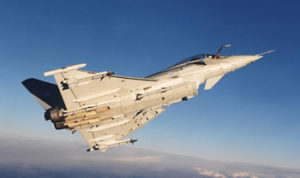Forward looking infra-red (FLIR) viewing systems provide capability to view objects invisible to the naked eye, turning night into day. Thermal infra-red images can be produced from the heat energy that is around all the time, not from reflected visible light, providing imaging capability without lights or illuminators. Thermal energy penetrates atmospheric obscurants better and farther than visible light, allows viewing through haze, smoke, dust and even light fog. Day and night, through good weather and bad, close up and far away.
Typical wavebands used are 3 to 5um and 8 to 12um. A number of systems utilize dual band
FLIR is widely used in military air, land and sea systems for surveillance, target acquisition and navigation. Commercial applications are also growing in security, people detection in border surveillance and people avoidance in automotive systems.

Many applications are in severe environments requiring for example use in high speed application with exposure to rain and particle impact, exposure to corrosive salt spray and variation in temperature and humidity. In particular the front window element of the FLIR has to withstand severe weathering conditions and corrosion. Very few materials have the required ruggedness for external use in demanding environments, particularly at a price level suited for commercial applications.
Thin coatings on the window material are used to improve window transmittance by reducing reflection and reject unwanted optical wavelengths. Ideally the coating should provide protection to the window material and enhance rain and particle impact for high speed applications, provide scratch resistance and environmental durability.
Applied Multilayers has developed broadband transmissive optical thin films which provides excellent levels of protection to low cost infra-red substrate material such as zinc sulphide. Materials deposition is based on a patented high throughput room temperature process – closed field magnetron sputtering. This technique has previously demonstrated ultra-smooth low stress oxide materials for the visible/ near infrared spectral region. The film is deposited by closed field magnetron sputtering of germanium or graphite in a hydrocarbon reactive plasma, forming germanium-carbon (GexC (1-x)) and hard carbon respectively.